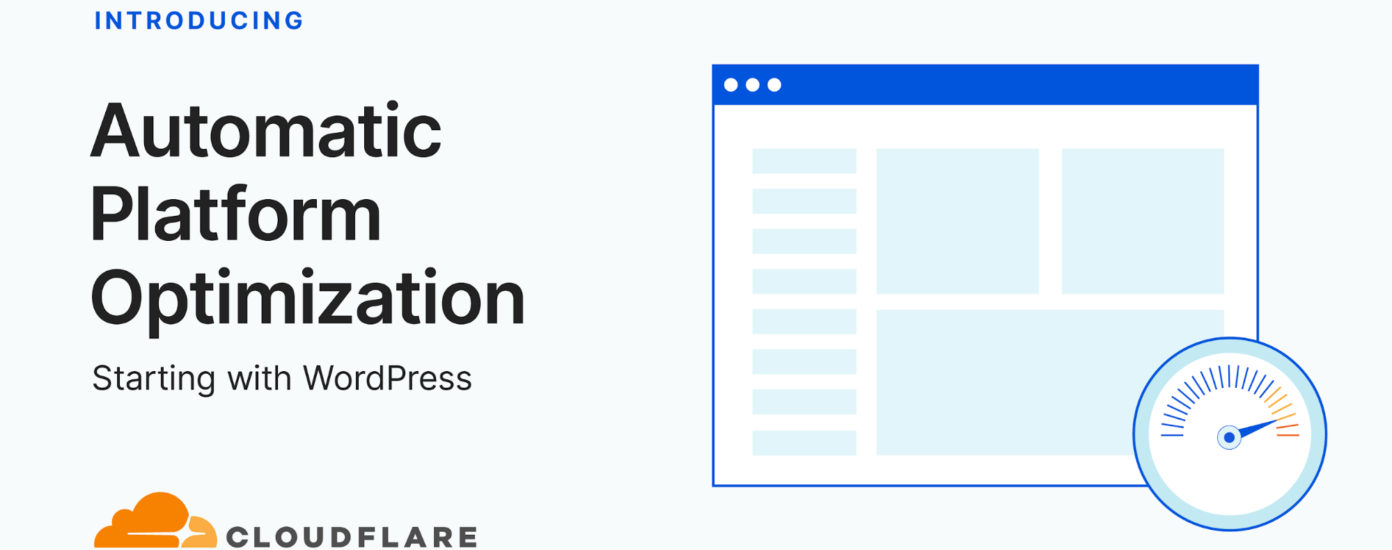Cloudflare launched a new feature tailored for WordPress last week called Automatic Platform Optimization (APO). Since the launch, we have gotten a lot of questions regarding the new feature. What does APO do? Should I use the APO? Let’s dive into the specifics!
Table of contents
What does Cloudflare Automatic Platform Optimization do?
HTML caching at Cloudflare’s edge
At its core, Cloudflare APO is all about caching. Enabling WordPress websites to utilize Cloudflare’s HTML caching feature – where the HTML is cached at Cloudflare nodes all over the globe. That means that the cache is “location aware,” and the content is cached closer to the visitor. Resulting in faster delivery of the HTML if the content is cached.
This is a feature we have had in our Cloudflare Business offering for some time using Servebolt Optimizer for WordPress, and after Cloudflare’s launch, it’s also available to Cloudflare Pro or even Cloudflare Free customers (at an extra cost per month).
Example
Visitor A is in Japan, and visits
example.com. Visitor A is the first one to visit example.com from Japan for some time, and therefor the HTML is not cached at Cloudflare’s node in Japan. The content needs to be fetched from the origin server. On its way from the origin server to Visitor A, the content is cached by Cloudflare’s node in Japan.Visitor B comes, not long after Visitor A, and Visitor B is also in Japan. Cloudflare has at this point cached the content at their node in Japan, and can deliver the content from the node in Japan. This much faster than fetching it from the origin server.
Visitor C comes after Visitor B, and is in New York City. Visitor B’s request to get the HTML can not be delivered from Cloudflare’s edge because no-one in New York has visited
example.comfor some time even though both Visitor A and Visitor B has visited the site.
In this example, only Visitor B is served cached content. But anyone that is visiting example.com after Visitor A from Japan will be served cached content as long as the cache is not stale, meaning the cache is fresh. Anyone who comes after Visitor C in the New York will also be served cached content.
Loading fonts from your own domain
The majority of websites today use fonts that are not system fonts, meaning fonts already present on the computer of the visitor. And a lot of them use Google Fonts as the source of the fonts for the website. Using Google Fonts on a website means you have to load the font from fonts.google.com.
If you load the fonts from your own domain instead, the browser then does not have to make a separate DNS lookup to figure out where on the internet the fonts can be loaded from. You can also cache the fonts the same way you cache your own static assets like CSS and JavaScript. But in addition to that, you can also send the fonts using multiplexing. A mechanism introduced in HTTP/2, which means to send multiple files at the same time.
All this results in faster loading of your website.
Should you use APO?
Absolutely, yes. If you already have Cloudflare Business and Servebolt Optimizer installed, you don’t have to do anything. We have had what APO does implement in our plugin for WordPress in combination with Cloudflare Business for some time already.
If you are not already using Cloudflare Business with Servebolt Optimizer, then go ahead and play around with Cloudflare APO in their plugin.
Great! This is all I need to have a fast website. Right?
Cloudflare Automatic Platform Optimization does not solve all your performance issues to have a fast website. Just like Servebolt Optimizer for WordPress does not solve all and every performance issue. Neither is a magic bullet for all performance issues, but they solve some of them.
Regardless of what plugins and mechanisms (like APO) you use to speed up your site, it does not change the amount of plugin code, theme code, and core code that is needed to deliver a site to your visitor. Extreme performance is always the result of many improvements, and never just one. For example, the extreme speed of Servebolt Cloud is the result of thousands and thousands of small performance-enhancing optimisations and adjustments.
All this said, APO is an awesome new feature from Cloudflare. And it implements what we have already done at Servebolt for some time. It will speed up your site for the visitors hitting cache. But it’s important to remember that not all visitors will hit cache.
What does APO not speed up?
Cloudflare Automatic Platform Optimization needs to cache the content to provide the main performance enhancements. Not all content can be cached, but what content cannot be cached?
In general, one can say that APO does not speed up requests that need to hit the server or, for other reasons, cannot be cached. This could be requested like:
- Loading any page with products in the cart on a WooCommerce store
- Loading pages behind login
- Most requests to
admin-ajax.phpand other Ajax endpoints
As always, our support and customer success team is happy to help you to speed up your site. With APO and other mechanisms that can be implemented on your site. Get in touch on our on-site chat or via [email protected]


